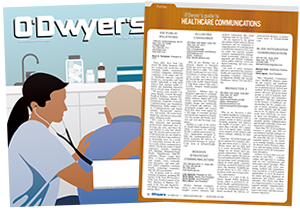 David Jarrard David Jarrard |
The traditionally difficult task of navigating one of the nation’s most byzantine business landscapes — hospitals are among the most complex organizations in the U.S. economy — is getting harder. And it will grow only more challenging as the seismic shifts caused by new reforms and outsider disruption continue to rattle healthcare.
|
|
First, the bad news: regardless of what any election-year politician says, deep down we all know that the uproarious market dynamics of the healthcare sector aren’t going to calm at any point in the foreseeable future. The earth is going to keep quaking.
The Affordable Care Act is here to stay and, although some of its new rules have been delayed, they’ll arrive soon enough. Reimbursement models continue their lurching shift towards value and away from fee for service. Both the clinical and corporate sides of health systems face heightened regulatory scrutiny. Physicians, stretched thin by shortages and buried beneath increasing reporting requirements, remain difficult stakeholders to appease. And once-predictable patients, now facing an increased payment burden, are harnessing their consumer power to force transparency and an improved patient experience. Disruptive change, it seems, is the one constant that leaders can count on in today’s environment.
Smart hospital leadership teams are taking forward-looking, strategic steps to better position their organizations for the future, often before change is forced upon them by players outside of the C-suite or boardroom.
For some, this means moving their health system through transformation change and massive realignment of resources, services and work assignments. For others, this means being acquired or partnering with a regional or national health systems. In any case, the changes today’s hospitals must pursue are far more complex and difficult to explain than ever.
The speed and magnitude of change in today’s healthcare environment requires a new approach to communications. It begins not with the tactics, but with the story. Here, communications is a strategy, not an opportunity. To accelerate change, healthcare leaders need smart communicators more than ever.
Driving the sort of engagement required today involves crafting a vision of where healthcare is going and how the health system plans to adapt — one that goes well beyond specific changes or transactions — before any steps towards change are ever taken. This vision will provide a broader context for change, outlining challenges and solutions against the backdrop healthcare’s current landscape. To be effective, it must speak to the mission and calling that is at the heart of every nurse and physician.
From there, communications must come in a steady drumbeat across a variety of channels, both traditional and new. It must also be a two-way channel. Stakeholders — especially internal ones — should have an opportunity to engage, ask questions and interact with leadership.
Within their communities, hospitals must take the opportunity to be the local expert on the transforming healthcare market and provide insight into how it affects healthcare delivery for both its staff and citizens. Additionally, the act of communicating and inviting dialogue with those who matter to the organization is an important message in itself.
These communications, which can take myriad forms — from one-on-one and small group dialogues, and digital communication platforms, to more traditional vehicles such as letters and advertisements — keep the conversation nimble and active as difficult changes are navigated, bringing a sense of transparency and mutual interest to the effort.
To deepen this sense, the messages a hospital constructs must also take into consideration the important adage that the messenger is often equally as important as the message itself, reflecting the style of various constituents. Whether it be the board, frontline staff, employed or independent physicians, community members or some other constituency, finding the voices and delivery mechanisms most trusted and utilized by its various stakeholder audiences is a key component of any successful communications strategy on the part of a hospital.
This continuing dialogue keeps the community engaged and also allows those impacted to acclimatize to the changes afoot. With the current complexity permeating the industry, motivating people to accept change takes time, repetition and personal interaction. Once alignment is gained, smart hospitals will stay engaged and keep selling.
A health system’s physicians, employees and community can be allies and accelerate change; or completely derail it. Sometimes the only difference between the two is a strong vision for the future and an engaged, well informed and energized army of advocates. Fortunately for communicators, our skills are needed to achieve the latter.
* * *
David Jarrard is President & CEO of Jarrard Phillips Cate & Hancock, Inc.



 Lo Isidro, senior director at Real Chemistry with more than a decade of strategic communications and PA experience, has joined Narrative Strategies.
Lo Isidro, senior director at Real Chemistry with more than a decade of strategic communications and PA experience, has joined Narrative Strategies. Nelson Fernandez, former North American chair of APCO Worldwide and managing director of Burson-Marsteller, has joined Volunteers in Medicine Berkshires as director of communications and PA.
Nelson Fernandez, former North American chair of APCO Worldwide and managing director of Burson-Marsteller, has joined Volunteers in Medicine Berkshires as director of communications and PA. Lilit Bargar, who was most recently an EVP in the healthcare practice at Weber Shandwick, comes on board at GCI Health as EVP, corporate practice lead.
Lilit Bargar, who was most recently an EVP in the healthcare practice at Weber Shandwick, comes on board at GCI Health as EVP, corporate practice lead.
 Five ways that successful thought leaders are made.
Five ways that successful thought leaders are made.


 Have a comment? Send it to
Have a comment? Send it to 
No comments have been submitted for this story yet.